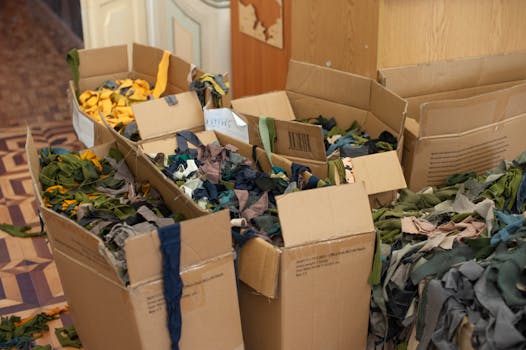Creating your own crafting materials can be an enjoyable and fulfilling experience. It allows you to personalize your projects and enables you to explore your creative side. Whether you’re a beginner or a seasoned crafter, understanding how to gather and prepare these materials is essential.
Crafting can range from making decorations to creating functional items. Knowing the types of materials needed will help you enhance your skills. This article will guide you through various aspects of crafting material creation.
As you delve into the world of crafting, different techniques and sources for materials become apparent. Thus, it is important to familiarize yourself with the types and sources available. Following this guide will set you on the right path to producing quality crafting materials.
Understanding Crafting Materials
Crafting materials are anything used to create a handmade product. Common examples include paper, fabric, wood, and beads. Identifying the suitable materials for different projects is crucial.
Each type of crafting material offers unique characteristics. For instance, paper varies in thickness and texture, influencing the final product’s look and feel. Understanding these properties helps in selecting the best materials.
Moreover, the availability of materials can vary based on location. Local craft stores, online shops, and even recycling can be excellent sources. This variety allows crafters to experiment with different materials.
When starting your journey, maintaining an organized workspace is beneficial. Having a dedicated area to store and create can streamline your process. Organization allows easy access to materials, enhancing productivity.
Lastly, having a basic knowledge about material types can increase your confidence as a crafter. Experimenting will provide insight into how different materials interact. This exploration is vital for growth in crafting skills.
Gathering Natural Materials
Natural materials can add unique qualities to your projects. Items like leaves, twigs, stones, and shells are great examples. These materials can often be found in local parks or nature trails.
To gather natural materials, consider setting aside a few hours for foraging. Bring along suitable containers to ensure safe transport. Always remember to respect nature during your gathering adventures.
Once collected, these materials may require cleaning. Most natural materials should be washed and dried before use. This step ensures they are suitable for crafting and prevents degradation.
Additionally, consider the seasonal variations when collecting. Many natural materials may be available only during specific seasons. Planning your collection accordingly will help in sourcing fresh materials.
Lastly, do not hesitate to think creatively about how to utilize what you find. Often, just a little imagination can turn ordinary items into extraordinary crafting materials. Embrace the challenge of creativity.
Recycling Household Items
Recycling household items is an eco-friendly way to gather crafting materials. Everyday products often have a second life as crafting supplies. Items like cardboard, glass jars, and old fabrics are good examples.
To start recycling, assess what you typically discard. Set up a designated area in your home for collected items, making it easy to gather. This small change can lead to a wealth of resources.
Look for innovative ways to repurpose your materials. For instance, cardboard can be cut into various shapes, while glass jars can become organizers. Imagination is your only limit here.
Moreover, engaging children in this process can make crafting a family activity. Teaching them about recycling fosters creativity and environmental awareness. It also promotes family bonding through shared crafting experiences.
Remember, the best materials are often the ones you already have. Find value in the items around you and challenge yourself to create something new. This not only saves money but also promotes sustainability.
Shopping for Crafting Materials
Shopping specifically for crafting materials can be fun and rewarding. Numerous craft stores, online marketplaces, and even local stores give crafters ample choices. Understanding what to look for can enhance your shopping experience.
When shopping, create a list of materials you need for your specific projects. Doing so prevents impulse buying and ensures focusing on essentials. This approach can save both time and money.
Don’t forget to check for sales and discounts, either in-store or online. Many craft stores offer promotions that can significantly reduce costs. Keeping an eye on these deals is beneficial for budgeting.
In addition, consider joining crafting groups or forums. Many members share information about where to find materials at reasonable prices. Connecting with others can lead to valuable insights and tips.
Finally, make sure to compare quality as well as price. Investing in higher-quality materials can yield better results. Taking the time to research options can lead to greater satisfaction in your projects.
Creating Custom Materials
Creating custom materials allows for true personalization in your projects. This can involve making your own paper, fabric, or even paint. The process can be both fun and fulfilling.
For instance, handmade paper can be crafted from recycled materials. Simply tear old paper into small pieces, soak, and blend it into pulp. Then, spread it out to dry, forming unique sheets perfect for crafting.
Another option includes dyeing fabrics at home. Using natural dyes from vegetables or commercial dye kits can enhance fabric color variety. This method enables you to match colors precisely with your project needs.
You can also create your own beads or buttons. Utilizing polymer clay or even old jewelry can yield custom shapes and colors. Creating your unique embellishments can add significant character to your creations.
Overall, the process of creating custom materials requires patience and experimentation. Embrace the learning curve, and enjoy the control it offers over your crafting projects.
Storing Crafting Materials
Effective storage is crucial for managing your crafting materials. When organized correctly, it becomes easy to locate what you need. This efficiency reduces frustration and enhances your crafting experience.
Consider categorizing your materials by type. For example, keep fabrics in one section, while papers and embellishments go in another. This method allows quick access and helps maintain order.
Invest in quality storage solutions such as bins, shelves, and organizers. Clear containers are particularly useful, allowing you to see contents easily. Labeling each container can further enhance the organization process.
Moreover, maintain a regular cleaning schedule to declutter your workspace. Taking a moment to assess unused materials will free up space for new ones. It also aids in discovering forgotten treasures.
Lastly, respect your materials by storing them properly. Some items require specific conditions to prevent damage. By prioritizing care, you ensure that your materials are ready when creativity strikes.
Conclusion
Creating your own crafting materials opens up endless possibilities. From natural collections to recycling household items, each method enhances creativity. Additionally, understanding storage and organization can optimize your crafting experience.
Embrace the various sources of materials available to you. Whether shopping, foraging, or creating, the process can be both educational and enjoyable. Crafting can thrive when creativity meets resourcefulness.
Ultimately, the journey of crafting is as rewarding as the final product. So, dive in, experiment, and let your imagination run wild. The world of crafting awaits your unique touch.


